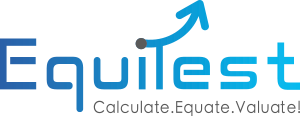Maximizing Acquisition Insights: Unraveling Purchase Price Allocation
MediaDelve deeper into the world of mergers and acquisitions by exploring our detailed guide on Purchase Price Allocation. Uncover valuable insights, learn the nuances of asset valuation, and gain a profound understanding of the strategic elements that define successful corporate integration. Read more to navigate the complexities of PPA and emerge equipped to make informed financial decisions in the realm of business acquisitions.
In the intricate landscape of mergers and acquisitions, a pivotal element often overlooked is the Purchase Price Allocation (PPA) process. This financial maneuver, wielded by valuation professionals, crafts the financial narrative post-acquisition, illuminating the true worth of assets and liabilities. Let's delve into the depths of purchase price allocation, unraveling its intricacies and providing a comprehensive example.
Decoding Purchase Price Allocation
Purchase Price Allocation, abbreviated as PPA, stands as the beacon of acquisitions accounting. This post-deal ritual assigns tangible value to the assets and liabilities of the acquired entity. Picture this: Company A has successfully acquired Company B, inked contracts, and formalities done. Now, Company A embarks on the task of attributing fair value to every facet of Company B's portfolio. This meticulous process ensures accurate recordings on Company A's financial canvas, factoring in unallocated value, goodwill, and the human capital within the acquired entity.
The Utility of Purchase Price Allocation
Embedded within the International Financial Reporting Standards (IFRS), with global resonance including Australia, PPA emerges as the linchpin in valuating companies entwined in the dance of mergers and acquisitions. No longer confined to acquisitions alone, the updated standards mandate PPA for both acquisitions and mergers. Additionally, a change in control triggers the need for PPA, exemplified when a shareholder gains substantial equity to assume controlling interest.
Unveiling the Components of Purchase Price Allocation
To navigate the realms of PPA, acquaint yourself with its triad of components: Net Identifiable Assets, Write-ups, and Purchase Price Allocation Goodwill.
Net Identifiable Assets
This encompasses the total value of assets owned by the acquired company, minus its liabilities. Tangible and intangible assets find a home here, reflecting their book value on the target company's balance sheet.
Write-ups
These adjustments, validated by independent valuation experts, rectify disparities between the carrying value and the current fair market value. Any difference prompts a necessary correction through a corresponding write-up.
Purchase Price Allocation Goodwill
When the acquiring entity disburses an amount surpassing the net value of the target company, the surplus becomes goodwill. Essentially, it signifies the disparity between fair market value and purchase price. IFRS standards mandate periodic evaluations of goodwill, with any adjustments duly recorded.
The Essence of Valuation in Purchase Price Allocation
Integral to the Purchase Price Allocation process is the art of valuation. Valuation professionals play a crucial role in determining the fair market value of assets, guiding the intricate dance of assigning worth to every component. Their expertise ensures that the financial landscape post-acquisition accurately mirrors the true value of the entities involved.
Beyond the Balance Sheet: A Purchase Price Allocation Example
Embark on a hypothetical journey with Company A's acquisition of Company B for a $10 billion price tag. The deal's conclusion signals the initiation of a meticulous PPA for accounting compliance.
Company B's assets boast an $8 billion book value, while its liabilities weigh in at $2 billion. The calculation for net identifiable assets involves subtracting liabilities from assets, resulting in $6 billion.
An independent valuation professional scrutinizes the assets, valuing them at $7 billion. The delta between fair market value ($7 billion) and net identifiable assets ($6 billion) translates into a $1 billion write-up.
Recording goodwill concludes the process. With Company A disbursing $10 billion and the combined value of net identifiable assets and write-up standing at $7 billion, a surplus of $3 billion emerges as goodwill.
In conclusion, mastering the art of Purchase Price Allocation is akin to deciphering the code of mergers and acquisitions, revealing insights that extend beyond the balance sheet and into the strategic nuances of corporate synergy.
The importance of Purchase Price Allocation
The importance of Purchase Price Allocation (PPA) in the realm of business acquisitions and mergers cannot be overstated. Let's unravel the key reasons behind its vital role:
Financial Reporting and Compliance
PPA serves as a linchpin in financial reporting, particularly for public companies and those adhering to Generally Accepted Accounting Principles (GAAP) or International Financial Reporting Standards (IFRS). Its precision ensures that financial statements accurately portray the acquired entity's financial impact, offering a true and fair representation. At Peak Business Valuation, we specialize in delivering compliant PPA reports, ensuring businesses nationwide meet stringent financial reporting standards.
Tax Implications
The efficacy of PPA extends to influencing the tax liability of the acquiring company. Through strategic allocation of the purchase price across different assets and liabilities, PPA becomes a powerful tool for minimizing tax implications and optimizing tax benefits.
Asset Management and Strategy
Understanding the value and intricacies of acquired assets empowers companies to formulate strategic plans for their management and leverage. This knowledge is pivotal in maximizing the return on investment derived from the acquired business, aligning with overarching organizational objectives.
Investor Confidence
Accurate and transparent financial reporting, encompassing PPA, fosters investor confidence. It showcases a company's comprehensive grasp of its assets, liabilities, and the financial repercussions of acquisitions. This transparency becomes a cornerstone in building trust and credibility among investors.
Compliance with Regulatory Bodies
PPA is not just beneficial but essential for adhering to regulatory bodies such as the Financial Accounting Standards Board (FASB) and the International Accounting Standards Board (IASB). These influential organizations set stringent standards for financial reporting, and compliance with PPA ensures alignment with regulatory requirements.
In conclusion, the multifaceted role of PPA goes beyond accounting intricacies; it shapes the financial landscape, optimizes tax efficiency, and enhances investor trust, making it an indispensable facet of successful business acquisitions and mergers.
Are you ready to unlock the power of accurate business valuations? Try Equitest, the leading business valuation software, for free! Equitest offers a user-friendly platform that allows you to assess the true value of your small business with ease. Whether you're an entrepreneur, investor, or financial professional, Equitest provides the tools and insights you need to make informed decisions and maximize your ROI. Don't miss out on this opportunity to experience the convenience and accuracy of Equitest. Sign up for your free trial today and see the difference it can make in your business valuation process.
Related items
Media
(To unmute the video clip, click the video)


